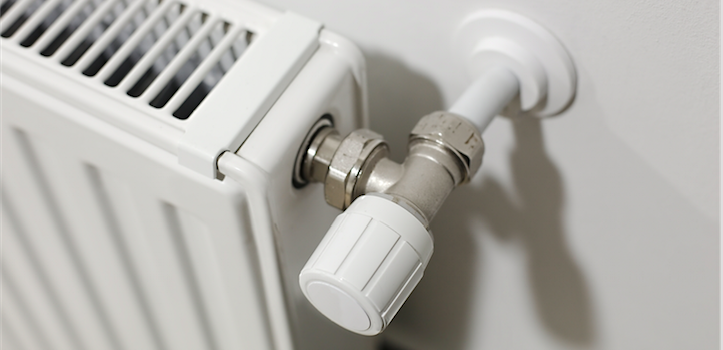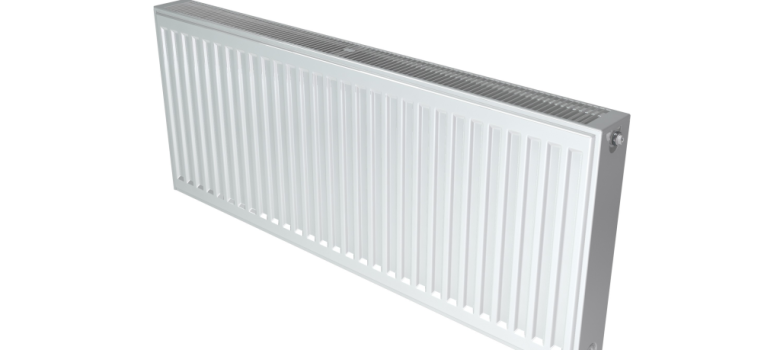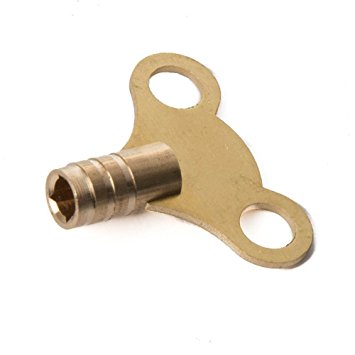
We’re all looking forward to the summer, but we’re not quite there yet. With that in mind, here’s how to make the most of your central heating by bleeding and balancing radiators. Do you have cold spots in your home? This could mean your radiators need a little TLC. If some are heating up more than others, it could be due to the following:
- They need bleeding
- They need balancing
Fear not – both are easy DIY tasks!
Let’s try bleeding first.
It’s not as scary as it sounds! ‘Bleeding’ is letting out air that is trapped inside a radiator. Doing so can really improve the efficiency of your heating system.
How do I bleed my radiators?
1. Turn your heating on. The radiators need to be hot in order to build enough pressure to force air out.
2. Pinpoint which radiators need bleeding. Being careful not to burn yourself, identify cool spots in your radiators – this could mean there’s air or gas trapped inside. These are the ones that could benefit from bring bled.
3. Switch off your central heating. Find the bleed valve (normally at the top of the radiator) and open it with a radiator key or flat-blade screwdriver. Lay down a towel down to catch any drips. Hold the key or screwdriver with a cloth and slowly turn it anti-clockwise. If gas is escaping you’ll hear a hissing sound. Then liquid will come out and you need to close the valve quickly.
4. Look at the gauge on your boiler to check pressure. If you need to top up, you can do so using the lever or tap on your boiler (the filling loop).
In the video below, you can see James bleeding a radiator at his home.
If this doesn’t help, you might need to try balancing the radiators next.
What is balancing?
Hot water reaches some more quickly than others, as it has less pipework to travel through – those nearer the boiler will usually heat up quicker. This means you may need to ‘balance’ both valves of your radiator to the same temperature, by turning the lock shield. This is a valve usually found at the bottom of your radiator, the opposite side from the temperature controls.
What will I need?
- Radiator-bleeding key
- Lockshield valve adjuster or adjustable spanner
- Digital thermometer
- Screwdriver
How do I balance my radiators?
1. Turn off your central heating and allow radiators to cool down.
2. Find the lockshield. It will be on the other side of the radiator to the thermostatic radiator valve or temperature adjuster. it usually has a push-on cap.
3. Open your wheelhead or temperature adjuster as far as it will go. Open the lockshield with a spanner by turning anti-clockwise.
4. Turn your central heating back on and note down the order the radiators heat up; the first will probably be those nearest the boiler. Turn the heating off and wait for the radiators to cool down.
5. Once they’ve cooled, turn the heating back on and, starting with the first radiator on your list, turn the lockshield valve clockwise until it is closed and then open it by a quarter of a turn. When the radiator warms up, take a temperature reading at the pipework leading to one of the valves.
6. Next, take a temperature reading at the pipework leading to the other valve. You need to open the lockshield valve gradually until there’s a 12°C difference between now and the reading you took before. It might take a couple of minutes for the change to happen.
7. Next, check the rest of the radiators in the system following the order in your list. The lockshield valve will need to be opened more the further you move away from the boiler; for some radiators it may need to be opened fully.
Hopefully this will help!
Think we missed something? Do you have a different opinion?
Comment below to get your voice heard…













Thank you I have never heard the term lock shield valve, I always ensure I bleed radiators to release air but now I will be able to balance the system as suggested. In regard to energy saving I have installed a small radiator in a well ventilated cupboard with clothes rails and we now have a drying cupboard. I remember as a child we had an airing cupboard and we used that as a drying cupboard, of course energy saving didn’t come into it then. I don’t know what the cost of running a small radiator 1 metre will be 635mm x 45mm radiator but I am sure it will not be £60 as is suggested with a drier, I would appreciate some info in this regard please.
I have a radiator that feels very cold and i bought a radiator key on ebay to bleed the radiator. The problem was that the key didn’t fit and looking closely it seems the bit the key goes on is actually rounded almost as if it has sheered off. Not sure how to release the air.
Hi Chrisloveless thanks for getting in touch. I have actually had the exact same issue with an old radiator in my property. I never got to the bottom of it, so hopefully someone can shed a bit of light!
This blog is a great read with some great information.
Great Information and even better read.
Regarding the problems of bleed valves being seized and being rounded to the extreme that the bleed key cannot open the valve. I recently encountered this on several radiators (all in one home) and found the problem is easily overcome by following the procedure listed below. But first we should remember that the problem has initially and most likely been caused by over-tightening of the valve following earlier bleeding of the radiator. Bleed valves are designed to seal with only minimum torque being applied, over-torqing (over-tightening) simply damages the sealing faces of the valve.
FIRST OPTION.
Step 1: Insert a screwdriver into the slot of the valve and apply as much anti clock force as is possible without damaging the slot.
Step 2: Using a hammer lightly tap the opposite end of the screwdriver handle like you are trying to hammer a nail into something whilst keeping the anti clockwise force applied. Note: several to many taps might be required
Step 3: The valve should crack (open slightly) and then turn freely using the screwdriver
Step 4: Once all air is expelled from the radiator gently close the the valve being careful not to over-tighten it.
SECOND OPTION: (This can be tried in the event that the first option is not suitable or unsuccessful).
Step:A: Place a rod or any instrument made of a reasonably hard material on the end of the damaged valve
Step B: Repeatedly using a hammer tap the rod towards the radiator as in step 2 of the previous option. Note: this will deform the end of the damaged valve.
Step C: Force the key onto the deformed end of the valve.
Step D: Follow Steps 2 to 4 of the first option.